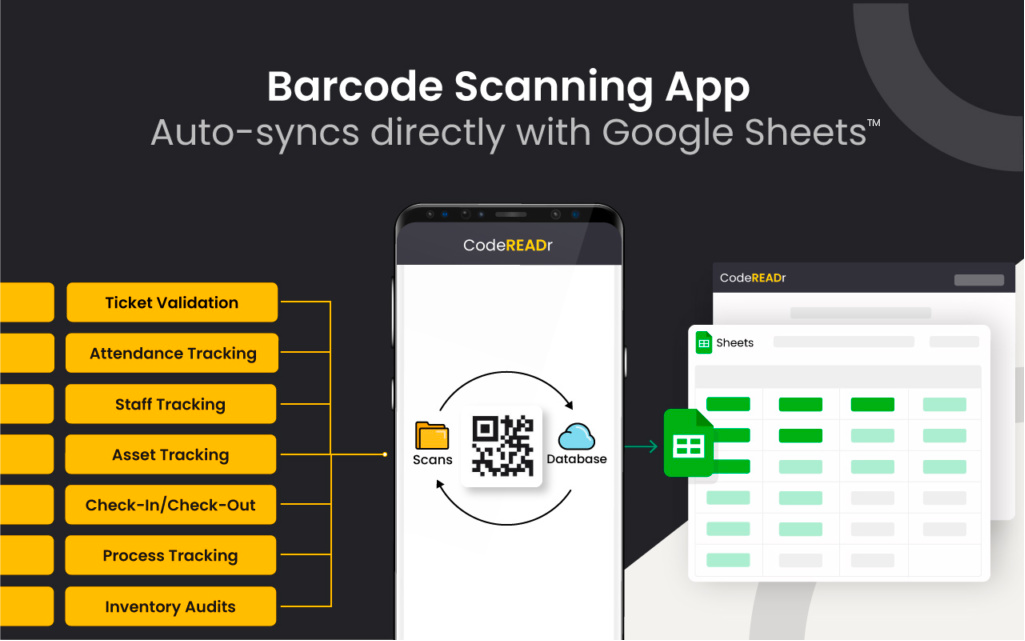Getting Started with CodeREADr Connector
Initial Setup Steps
For setting up your connections, we recommend having the add-on sheet open as well as the CodeREADr website open and signed in to your account.
- Install the Add-On
- Download and Install CodeREADr Connector add-on from Google Marketplace.
- Create a CodeREADr Account
- Sign up for a Free Account on CodeREADr’s website.
- The free tier allows up to 50 scans and 10 API calls per minute—ideal for testing.
- Install the CodeREADr: Barcode Scanner app on your mobile device
- from the App Store on iTunes
- from the Google Play Store
- Connect to CodeREADr API
- In Google Sheets, open the CodeREADr Connector via the Extensions menu.
- Click Getting Started and enter your CodeREADr API Key to activate the integration.
Finding your CodeREADr API KEY
- Log in to your CodeREADr account.
- Navigate to Account > Settings > API > Keys.
- Copy the API Key and go to the connector and click on the “Getting Started” link to paste the API Key in the appropriate field. Once done, the sidebar will appear on the right side of the sheet.
- Once you’ve installed the CodeREADr connector from the Google Marketplace, use the Extensions dropdown to start making your connections. You will see these Make Connections options in the sidebar.
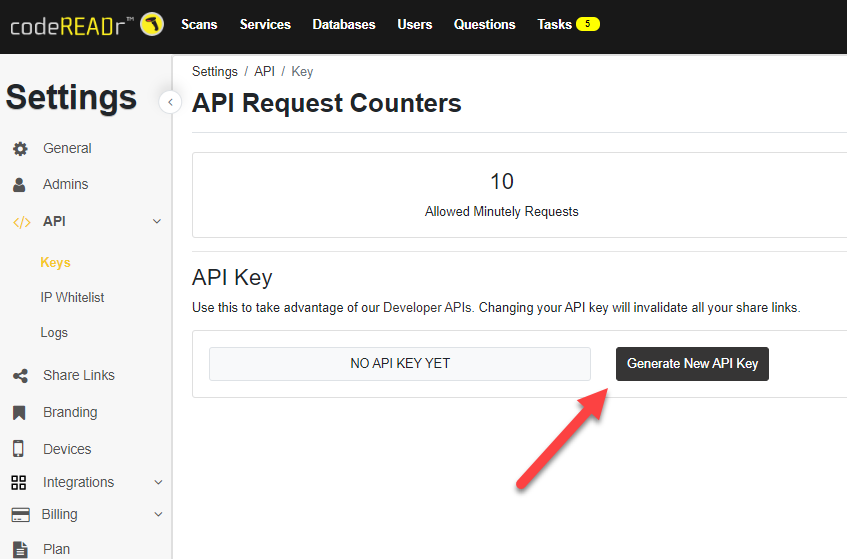
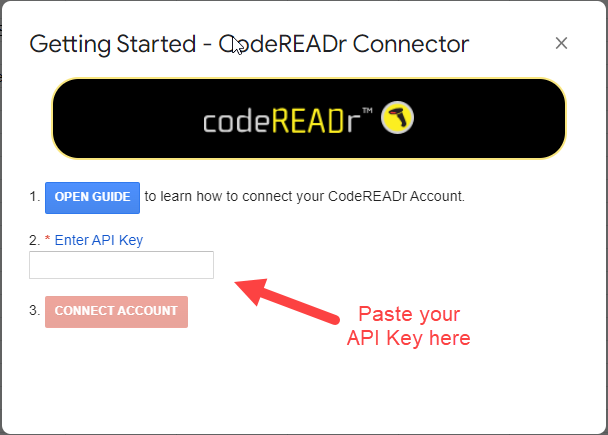
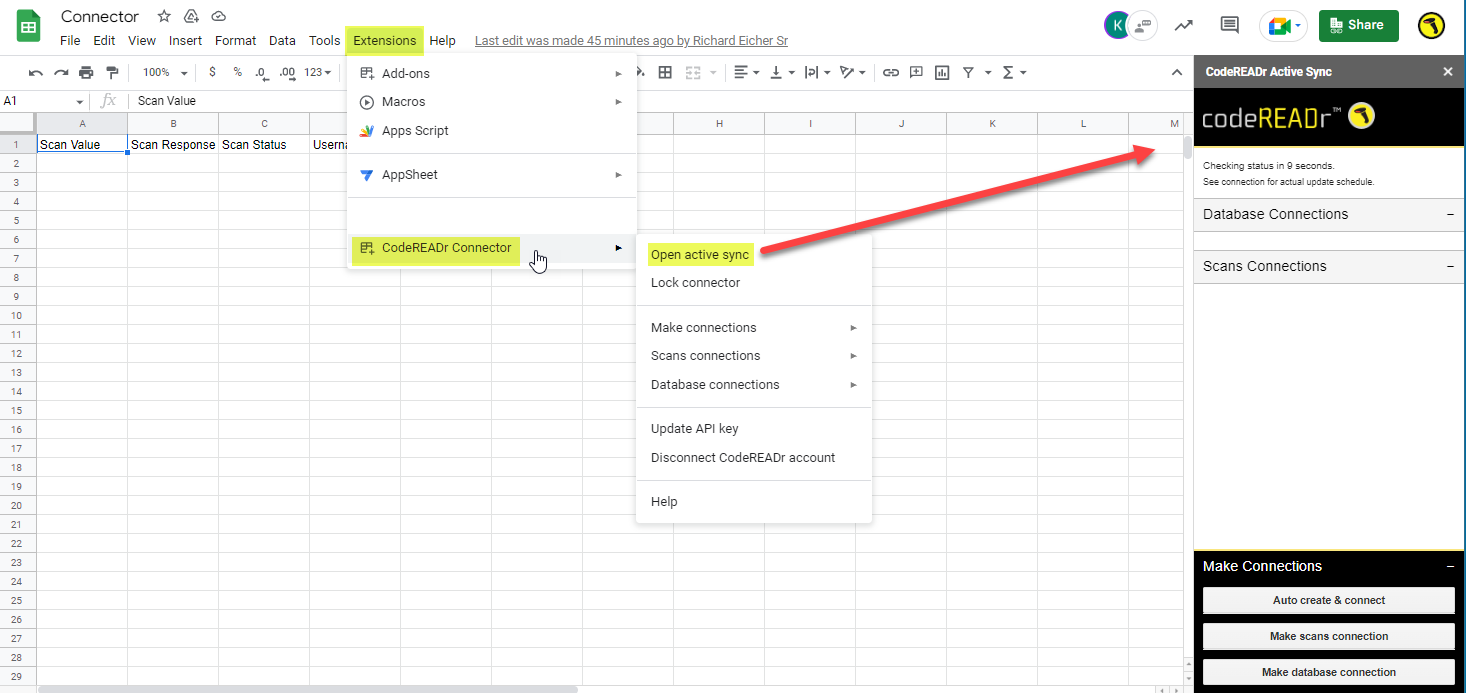
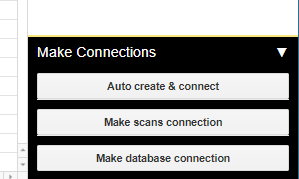
Key Features of the CodeREADr Connector
1. Auto Create & Connect: Record
The easiest way to start recording barcode scans directly in Google Sheets.
- Select Auto Create & Connect from the connector sidebar.
- Choose or rename the default service (e.g., “Add-on Example”).
- Assign users or app usernames.
- The scan connection will be made. You will see the tab in the sheet.
- Select the sheet to insert scans. Select the start column and row. Select the starting column and row. Select the service from which the scans will come. Then select the template by the amount of data to insert from each scan.
- Log in to the CodeREADr app and view your service.
Output: Scans will populate your sheet and sync with the CodeREADr app automatically.
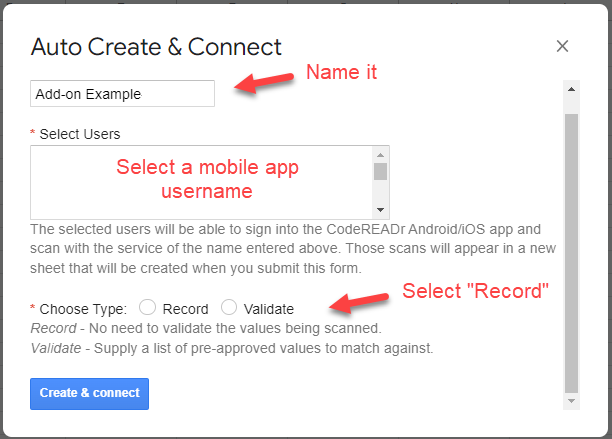
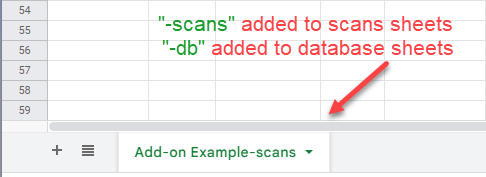
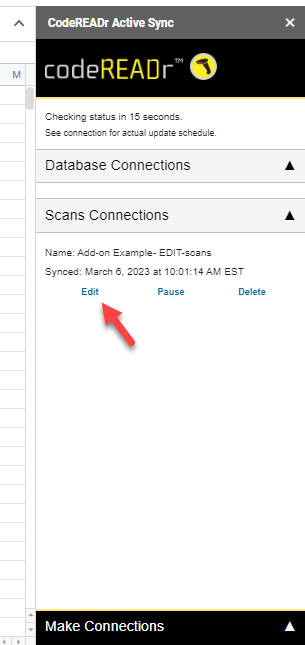
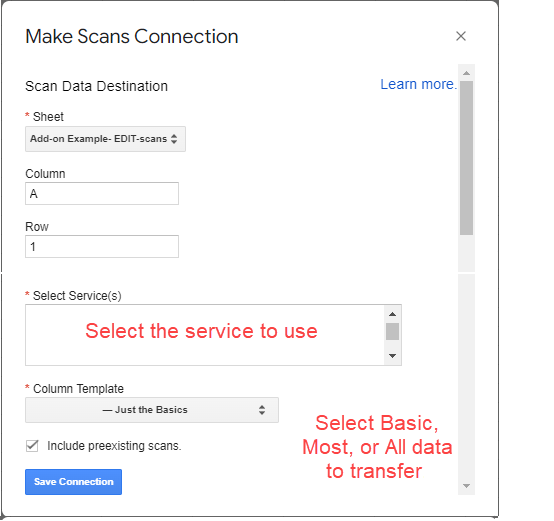

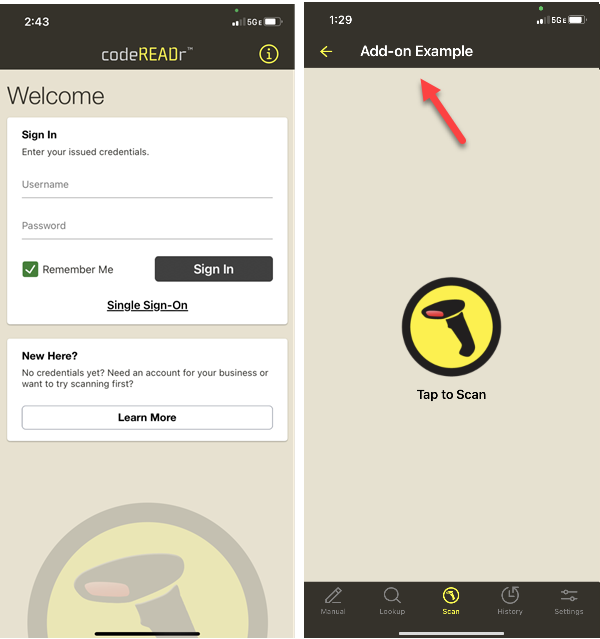
2. Auto Create: Validate Scans
Check scan values against a database in Google Sheets.
- Follow the steps of the above, but choose Validate from the connector.
- In addition to a new Scans Connections tab in the sheet, you will see a Database Connections option to edit the connection.
- Set up a database in the Google Sheet, with columns for barcode values, related data, and status (e.g., valid or invalid).
- Use the sample database or import your own values.
Validation Process:
- Scans are made, and match against the database for validity.
- Valid scans are green for a good match, invalid are red for invalid.
- Duplicate scans can be flagged as invalid.
- Special invalid responses are configurable on the CodeREADr platform.
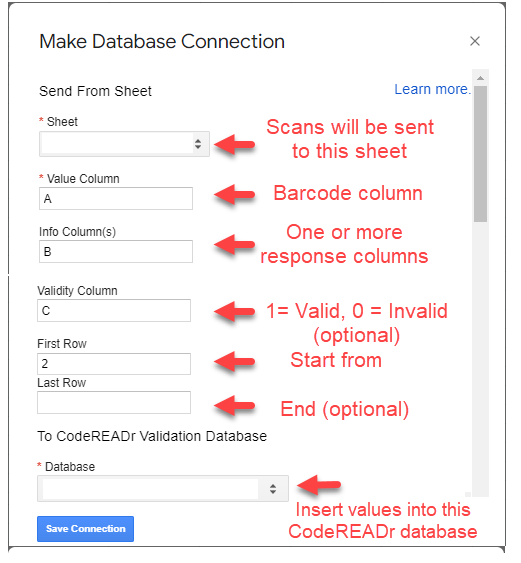

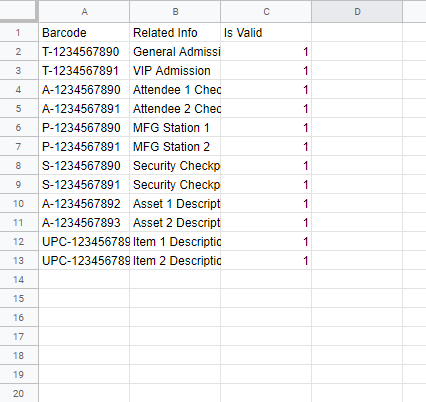
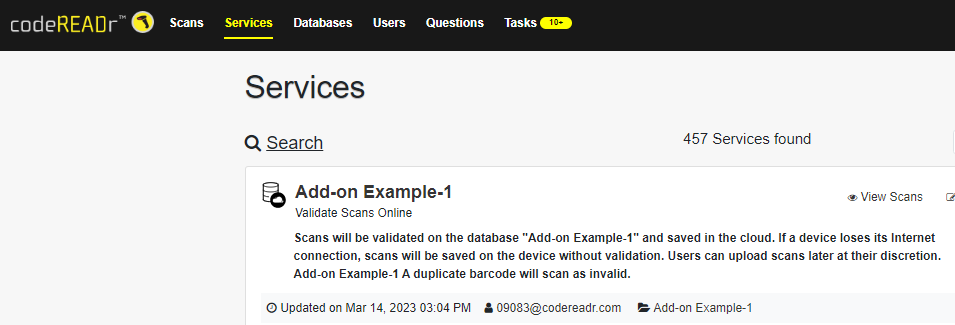

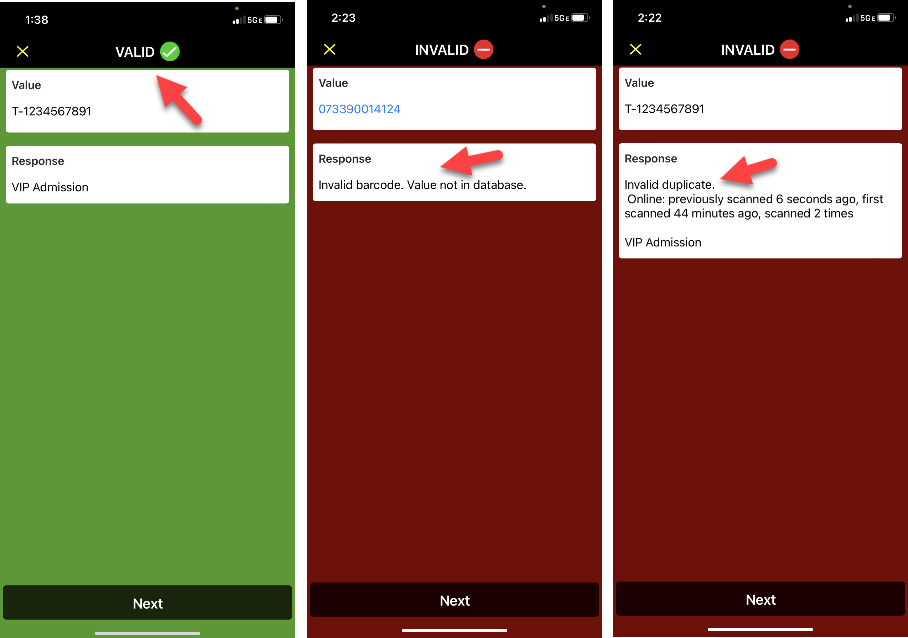
Make Scans Connection
Manually create scan workflows for specific services.
- From the sidebar, select Make Scans Connection.
- Link the service to a Google Sheet for customized scan templates.
- When saved, scans from the selected service will populate the selected sheet. Note: To create your own template, follow this Export Template article.

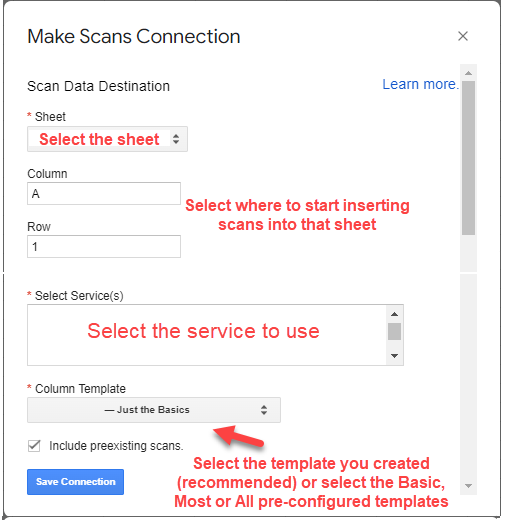
Make a Database Connection
Scan Data Syncing
- Active Sync (Sidebar open):
- Syncs new or updated scans every minute.
- Background Sync (Sidebar closed):
- Syncs scans hourly or can be manually triggered from the Extensions menu.
- Custom Solutions: Transfer data to other sheets or use tools like Zapier and MAKE for automation.
Database Syncing
- Real-Time Updates: Changes in Google Sheets sync to the CodeREADr database every minute (sidebar open).
- Schedule-Based Syncing (Based on database size):
- <500 values: Syncs within a minute.
- 500–10,000 values: Syncs every 5–20 minutes.
- 20,000 values: Syncs hourly.
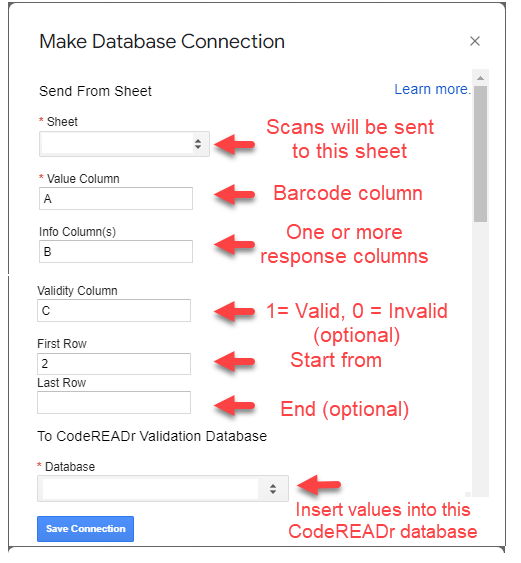
Advanced Customizations
Workflow Automation
- Configure detailed workflows on the CodeREADr website to handle specific use cases.
- Leverage APIs, webhooks, and third-party tools for integrations.
Sync Modes
- Record Mode: Captures scans and appends them to Google Sheets.
- Validate Mode: Verifies barcode values against a database and flags duplicates or invalid entries.
Templates
Create export templates on the CodeREADr website for tailored data structures.
Frequently Asked Questions
How do I automate importing and exporting data?
Use APIs or third-party tools like Zapier for seamless integration with your existing workflows.
Can I scan different barcode types?
Yes, CodeREADr supports all commercial barcode types, including QR codes, UPC, and Code 39.
What if my database is too large to sync quickly?
Split your database into smaller sheets or allow for longer sync times for large datasets.
Why Use the CodeREADr Connector?
- Streamlined Barcode Scanning: Automate scan recording and validation with Google Sheets.
- Customizable Workflows: Tailor data templates and workflows to suit any use case.
- Seamless Integration: Sync with tools like Zapier or third-party applications.
Start leveraging the power of the CodeREADr Connector today to enhance your data management efficiency!
